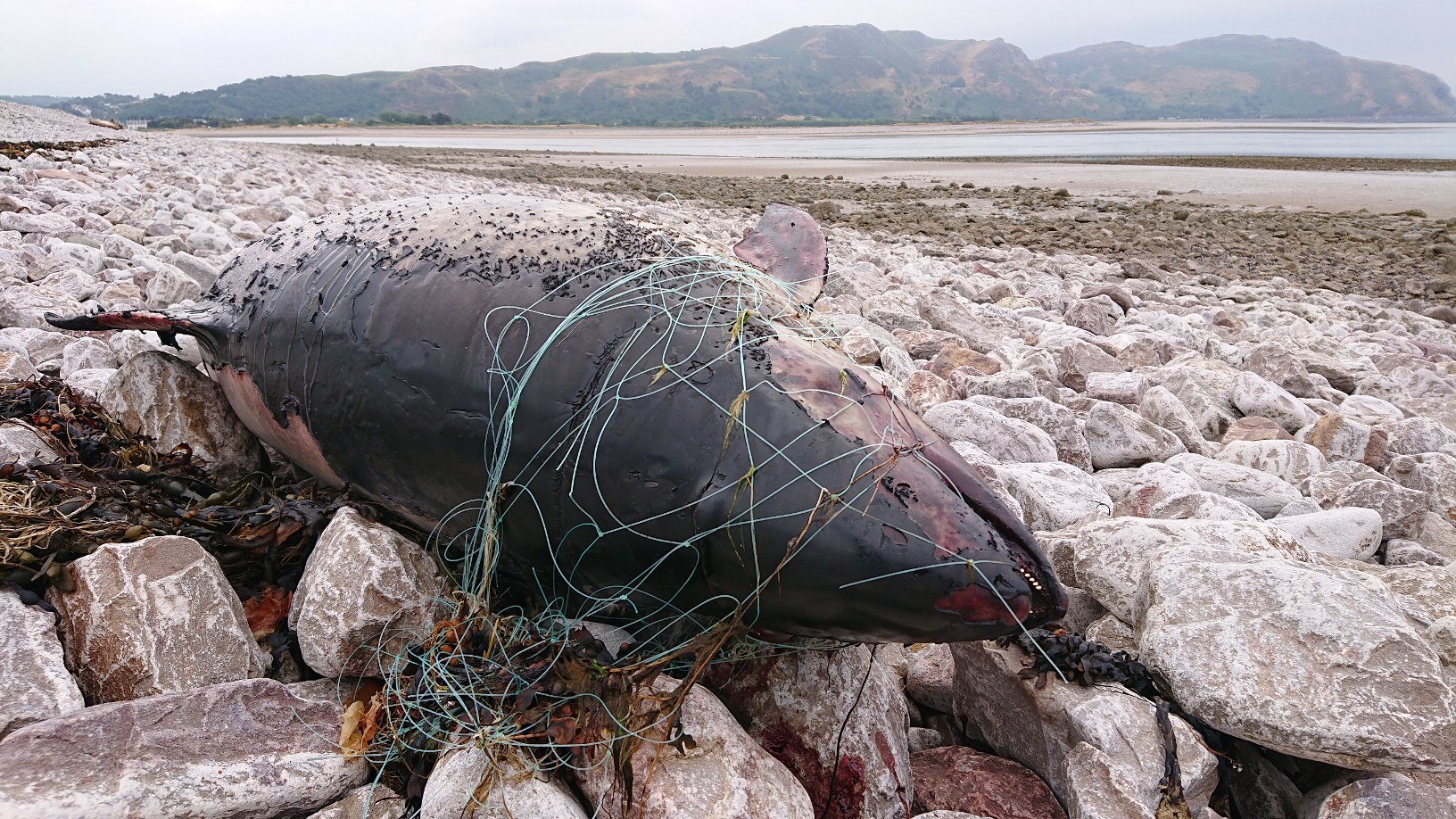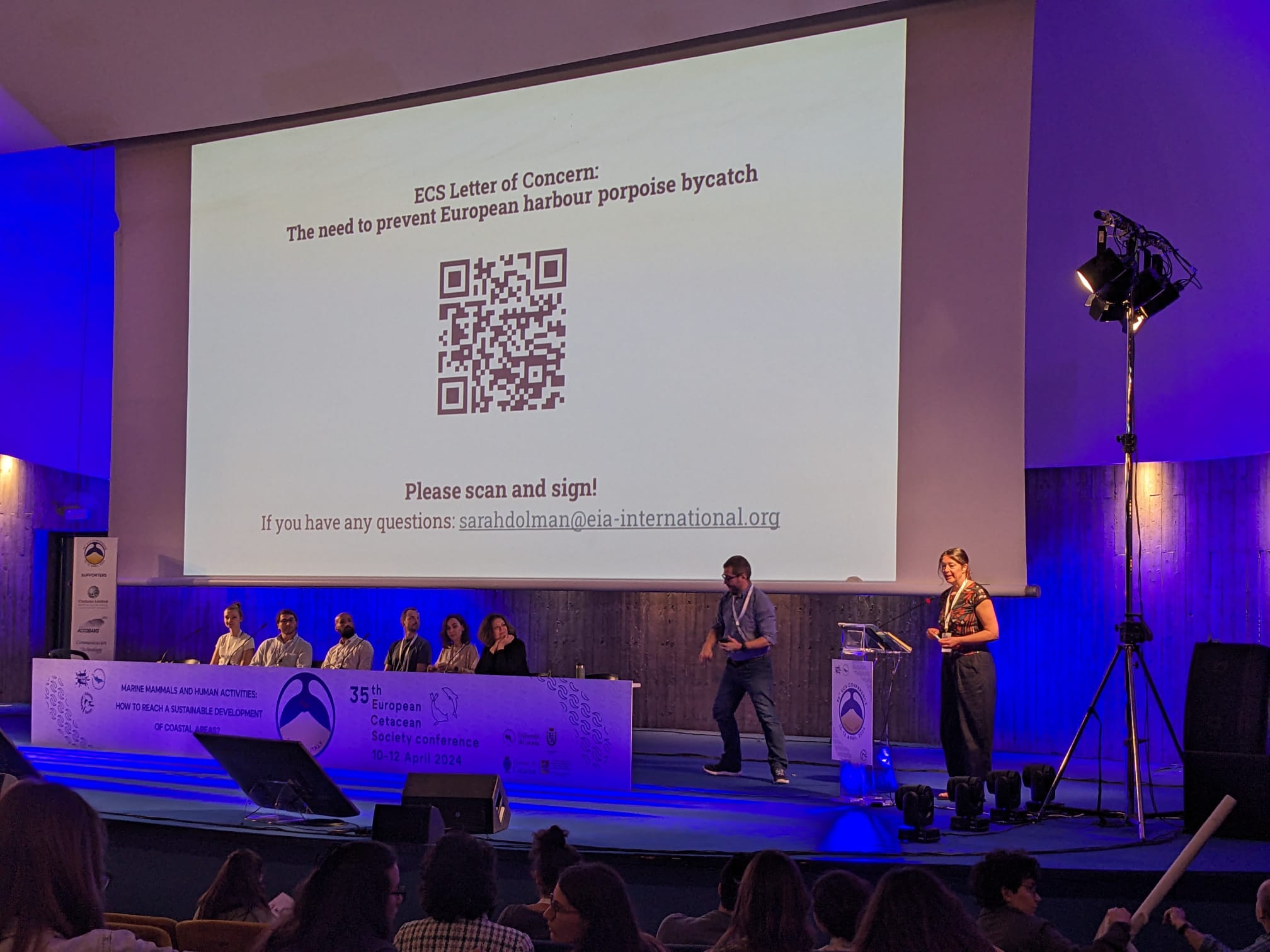Europe lags behind in taking action to protect porpoises from dying as bycatch in fishing nets



Attending the annual European Cetacean Society (ECS) conference in Catania, Sicily this month, I wanted to raise the profile of cetacean bycatch in fishing gear in European waters.
Harbour porpoises, in particular, have a tough time. They are Europe’s smallest cetacean (the collective term for whales dolphins and porpoises) and are widespread. As a consequence, they are bycaught in the highest numbers and in every European ocean basin.
Despite working on bycatch issues for more than a decade, it still seems shocking to me that thousands of porpoises die so close to home every year.

Harbour porpoise (c) Ceri Wyn Morris
Harbour porpoises are bycaught at levels that mean their populations are impacted in the waters around the UK. The Iberian porpoise population off the Spanish and Portuguese coasts are too, as well as in those in the Baltic proper, the Belt, Black and Mediterranean seas.
Some of these populations are small, locally endangered and, where data exists, declining. Bycatch in static nets, such as gillnets, takes the highest toll.
Governments have failed to implement European laws to put in place effective protection. Despite decades of scientific attention to this issue, there are no harbour porpoise populations in European waters where bycatch has been adequately managed and prevented.
The European Commission has recognised that cetacean bycatch is a serious problem, pursuing infringement proceedings against numerous EU Member States since 2020 as a result, including Bulgaria, France, Italy, The Netherlands, Portugal, Spain and Sweden. The Commission also put in place an EU Fisheries Action Plan. The first deadlines requiring Member States to act to prevent harbour porpoise bycatch by the end of 2023 in the Baltic Proper, the Black Sea, the Iberian Atlantic (as well as common dolphins in the Bay of Biscay) have all been missed by the Member States involved.
During the conference, it was agreed that a Letter of Concern would be a useful way for the ECS to raise the issue of bycatch. I drafted the letter, which was signed by 130 ECS members from at least 21 different countries, in less than four hours! The Letter of Concern is available on the ECS website. I plan to present it as a Working Paper to the annual International Whaling Commission Scientific Committee meeting next week.

Sarah Dolman introduces the bycatch Letter of Concern at the ECS conference
At the ECS, EIA presented a poster on the The role of setting cetacean bycatch thresholds to achieve European legal obligations, in which we identified an increasing focus on setting cetacean bycatch thresholds (or bycatch limits) with various regional and global policy requirements. While it is important for governments and fisheries bodies to focus on setting a threshold limit not to be exceeded, focused efforts are urgently required to minimise or eliminate bycatch before reaching this level, where population level impacts are expected.
Bycatch has been on the agenda at the ECS meeting for longer than I have been attending these conferences (more than 20 years) and this year was no exception. There was a shifted focus, however, as an expert workshop considered the welfare implications of bycatch for the first time, rather than considering impacts at a population level.
This is a welcome step forward because when cetaceans (or any marine species) become entangled in fishing gear, they undoubtedly suffer before they die. Many will struggle and, in some cases, members of the same species will be around and will also be affected – for example, a dependent calf will not survive if its mother is entangled.
We do not yet account for injuries and stress that result from being bycaught in European waters and which may lead to death at a later time. Hopefully, this workshop is the first step towards changing that.
The impacts of fisheries bycatch are undoubtedly higher than we currently recognise or manage.